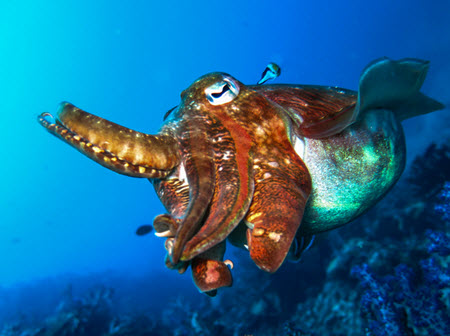Khao Lak is a series of villages in Thailand’s Phang Nga Province, dotted along the coast of the Andaman Sea. Most of them fall within the district Takua Pa District, but some are a part of Thai Mueang instead. The term Khao Lak is chiefly used within the tourist industry – this area is really popular among foreign visitors looking for sunny weather and sandy beaches.
In Thai, the name Khao Lak means Mount Lak, and Mount Lak is one of the main peaks in the mountainous region found in the Khao Lak-Lam Ru National Park.
Contents
Ambiance
Compared to neighbouring tourist destinations such as Phuket, Khao Lak tend to be more peaceful and up-scale. Generally speaking, Khao Lak attracts a lot of families with children, and couples looking for a romantic getaway, and is not a favoured destination for hardcore party people.
Many of the tourists here come from the Nordic countries, Germany or the United Kingdom.
Khao Lak has plenty of secluded resorts, and building structures taller than the height of a coconut palm tree is not permitted.
Beaches
There are often no sharp boarders that indicate where on beach ends and the next one starts. These names are just used in a loose way to describe different parts of the long, continuous beach that goes on for circa 25 km in total.
From south to north:
| Beach | Where? |
| Khao Lak Beach | From the headland that marks the southern boundary of Khao Lak region |
| Nang Thong Beach | In the village Bang La On |
| Bang Niang | In the village Bang Niang, roughly 2-3 km north of Bang La On |
| Khuk Khak | In the village Khuk Khak, rouhgly 2-3 km north of Bang Niang |
| Cape Pakarang | North of Khuk Khak |
| Bang Sak | North of Cape Pakarang |
Getting to Khao Lak
Khao Lak is found roughly 60 km north of Phuket island if you drive on the Phetkasem Road (Thai Route 4). This is one of the country’s four major highways.
On the island of Phuket is Phuket International Airport (IATA: HKT, ICAO: VTSP). This means that if you want to avoid the hustle and bustle of Bangkok, you can either fly in directly to Phuket Airport, or catch a connecting flight from the airport in Bangkok without ever leaving the airport area.
Scuba diving
 Khao Lak is a departure point for liveaboard scuba diving boats heading for the Similan Islands. After being closed to visitors due to environmental concerns, the Similan Islands national park was opened again in October 2018, but with new rules in place that allow a maximum of 3,850 visitors per day.
Khao Lak is a departure point for liveaboard scuba diving boats heading for the Similan Islands. After being closed to visitors due to environmental concerns, the Similan Islands national park was opened again in October 2018, but with new rules in place that allow a maximum of 3,850 visitors per day.
2004 tsunami
Khao Lak was especially hard-hit by the disastrous Indian Ocean tsunami that occurred on 26 December, 2004. A lot of people died, including both Thai citizens, foreign tourists and Burmese migrant workers. Among the killed was Bhumi Jensen, grandson of the King of Thailand. His mother Princess Ubolratana and her daughter, Jensen’s sister, survived by seeking shelter on an upper store of a sturdy building at the La Flora resort. The President of Finland, Sauli Niinistö, and his son survived by clinging to a power line pole.
In addition to the acute damage caused by the wave, the local economy was also devastated due to a combination of tourist infrastructure being destroyed and holidaymakers being reluctant to visit after the disaster.
Khao Lak today
Since 2004, the local economy has largely bounced back, with coastal resorts being repaired or rebuilt, and tourists feeling more okay about coming here. Data from 2016 shows that Khao Lak then had 7,822 hotel rooms divided over 104 registered accommodations. For the high season period, which is November – March, the occupancy rate ranged from 70% to 90%.
Near Bang Niang’s marketplace, a museum has been established dedicated to the catastrophe of December 2004. This is the site where the Thai navy boat 813 was beached, nearly 2 km inland from Bang Niang Beach.
Tsunami warning system
After the 2004 tsunami, a tsunami warning system was installed for Khao Lak, with loud sirens that alert the population if there is a heightened risk of a tsunami.
These warning sirens did for instance sound in April 2012, when an earthquake off the coast of Sumatra prompted the sirens to go off roughly 2 hours before estimated tsunami landfall.
